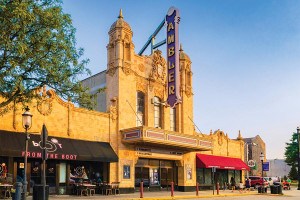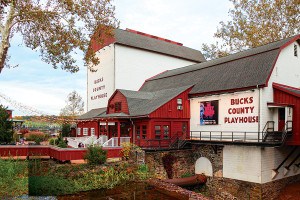How Knowing His Tomatoes May Make a Winner Out of Wynn
Daniel Keating, head of the construction company that bears his name and the lead contractor on the proposed Wynn Philadelphia casino resort, acknowledges that each of the six proposals for the remaining casino license in Philly has something to recommend it. But in the end, he says, the weaknesses of the other five outweigh their strengths, which is why he signed on as the contractor for the Wynn project.
“The three South Philly casinos are adequate in size, and their location is not as big a negative as some think,” Keating said in an hourlong interview at the Phoenix the other day. “They can handle the traffic they will generate at some times of the day. The problem is convincing us that South Philly wants another traffic generator.”
“The two downtown casinos demonstrate a commitment to urban revitalization, and to the uneducated, that’s a wonderful thing. But to those who follow the [casino] industry, well, you can’t put a square peg in a round hole.”
Keating should know. He’s been involved in building 26 different casinos across the country–including half of those currently operating in Pennsylvania as well as the city’s one existing casino, Sugar House.
“We were asked [by the Sugar House backers], ‘What sites would make the most sense to build a casino in the Philadelphia marketplace?’ We came up with 50 and narrowed them down to 15, and this was before any of the players were selected,” Keating said, adding that the best of all the sites was the Bala Golf Course. It was ruled out early, though, because no one in the area wanted a casino for a neighbor. Traffic was one of the major concerns: “The streets of Philadelphia are such that any large traffic clogs them, no matter what.”
Patron traffic remains a major factor the Pennsylvania Gaming Commission uses in determining whether to award a license, and is one reason Keating is more bullish about Wynn.
“No one takes a subway or trolley to a casino,” he said, because people worry about carrying lots of money on public transit. That’s a major strike against the two in-city proposals, both of which rest on assumptions that a sizable share of their patrons will arrive on foot or by transit.
PennDOT has a formula to determine how much parking a casino needs based on the number of slot- and table-game seats, or “positions,” and the Provence and Market8 fall, Keating said, well short both of the formula and what the zoning ordinances require.
Partly because of the need for parking, casinos are usually located on large lots. “It takes 10 acres minimum to build a casino,” Keating said. “You seldom see them on less than 18, and you never see them on small parcels because of the traffic.”
At 60 acres, the Wynn site is the largest of all six–large enough to hold all of the other five sites combined and have land left over. The only other proposed casino site with enough land to handle the anticipated traffic without disruption is the Casino Revolution land owned by the Procacci Brothers’ food distributorship near the Walt Whitman Bridge. On the other extreme, Market8’s tiny 1.9-acre site is not only inadequate for the task, it’s particularly difficult for car traffic to access: “You have a 1,000-space underground parking garage with only one way in and out,” said Keating.
Keating believes the business model for the other projects is flawed due to changes in the state gaming market. When the the bill to allow casino gambling in Pennsylvania became law, only one neighboring state allowed casinos, and only in Atlantic City. “Now, every state that borders Pennsylvania allows casinos.” Which, he says, knocks the assumptions behind the other five proposals–Blatstein’s possibly excepted–into a cocked hat.
The basic problem with them is that they assume that most of their patrons will come from the region, and the regional gaming market is pretty much saturated. This last casino will need to draw patrons from well beyond the Mid-Atlantic states to survive, Keating said, and the Wynn organization–with its destination casino resorts–has the track record to make that happen.
By any measure, the Wynn proposal is massive. The $925 million project would be the largest private investment in the state’s history and would dwarf most huge public construction projects as well, including the $700 million Pennsylvania Convention Center expansion. Wynn projects 3,600 construction jobs flowing from the project and has set a 40 percent hiring goal for Philadelphia residents.
The proposal also includes a sizable community benefit in the form of 18 acres of new parkland. After meeting with Deputy Mayor for Planning and Economic Development Alan Greenberger and studying the city’s master plan for a pathway along the Delaware, Wynn added another component to his proposal: a 4.5-acre riverfront promenade.
Wynn’s proposal is also the beneficiary of a fortunate coincidence: PennDOT’s reconstruction of the Girard Avenue interchange on I-95 means the reconfigured ramps will dump traffic right at the main entrance to the Wynn site, eliminating most potential traffic problems.
Traffic problems–or the lack thereof at Sugar House–also explain the much warmer reception the Wynn proposal has received from Fishtown and Port Richmond residents, who the Wynn team has been assiduously wooing with generous grants for neighborhood projects. The payoff for the embrace: unanimous support from all the neighborhood civic groups surrounding the site.
Of the other proposals, only the Casino Revolution project has garnered a similar level of support from community groups, and it has the least going against it in terms of location, size, neighborhood impact and the ability to handle crowds. But Keating noted that the ownership team has no experience operating a casino, nor has it partnered with an experienced operator as other less experienced developers have.
“Joe Procacci’s a great guy, but he’s not in the gaming business,” Keating said. “Steve Wynn’s not in the tomato business.” Gaming, he went on, is “a mature business, and the people in it need to know all the moving parts.”
Given all the advantages of Wynn’s resort proposal, he said, the only reason for the relatively tepid response is that it remains organized around a casino. “If this were any other industry, this would be embraced with open arms.”
And in the end, he’s probably right. We will see if the PGCB agrees when it awards that last casino license around the end of the year.
Clarification: The community organizations in Fishtown and Port Richmond that received support for neighborhood improvement and cultural projects from Wynn Resorts played no role in reviewing or voting on the merits of the project. We apologize for implying that they did in the passage above.



